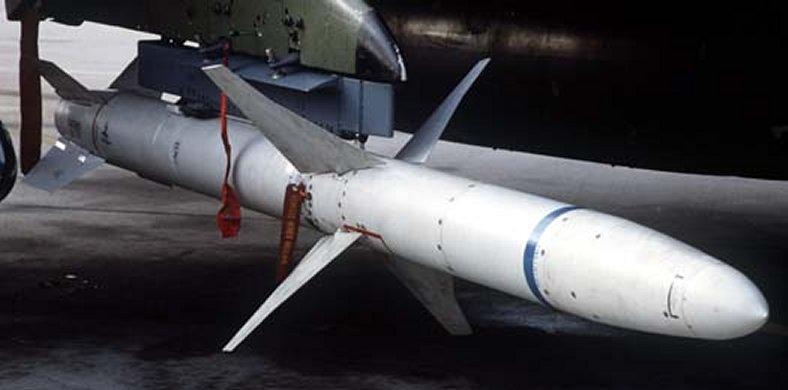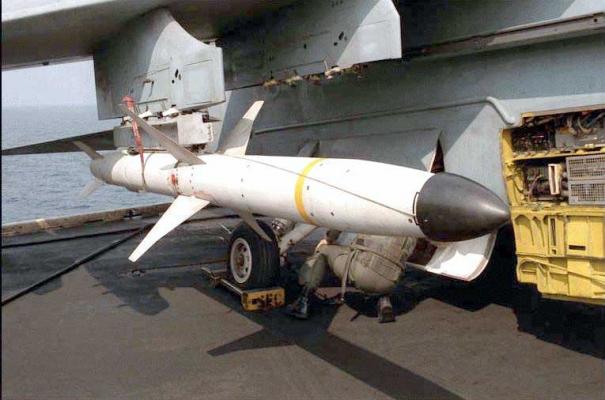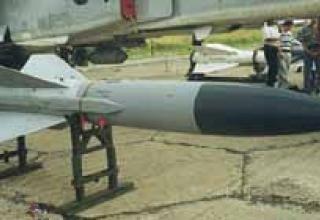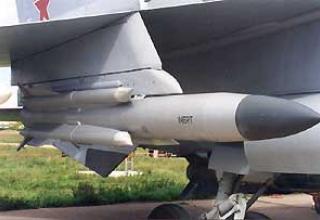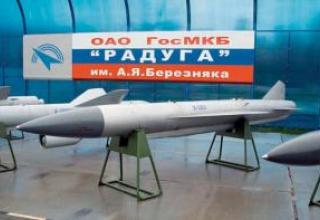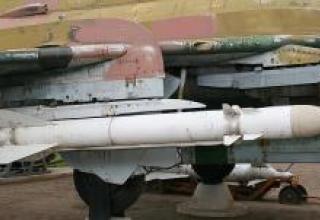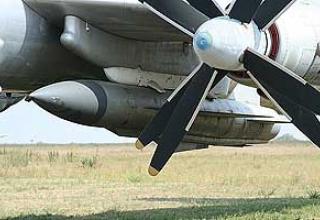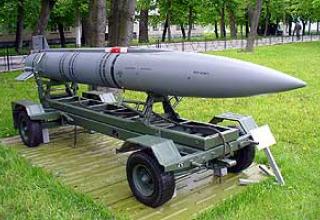In 1983, a new HARM ASM-88 (High-speed Anti-Radiation Missile) missile was adopted for service with the U.S. Air Force and Navy. Unlike "Shrike" and "Standard-ARM" missiles, except for ground and ship radars of anti-aircraft weapons control systems, it can hit early detection and guidance radars of fighters. According to U.S. data, the missile is capable of engaging radars of both continuous and pulsed radiation, operating in the frequency tuning mode.
HARM ASM-88 PRR is developed by Alliant Techsystems. By early 1998, more than 25,000 HARM missiles of modifications A, B and C were produced. The HARM missile is in service with armies of many countries, including Germany, Italy, Spain, Turkey, Greece and the Republic of Korea.
AGM-88 missiles were used by the U.S. Air Force in 1986 against Libyan air defense assets in the Gulf of Sidra, as well as allied aircraft during Operation Desert Storm in 1991. A total of 80 missiles were fired against Iraqi air defense radars during the operation.
Alliant Techsystems now offers a new generation of AARGM (Advanced Anti-Radiation Guided Missile / AGM-88E) missiles. AARGM is a multi-purpose, high-precision weapon, equipped with an improved control system with a satellite navigation receiver, and is capable of operating as part of an air attack group against a wide range of targets, including those that do not emit radiation. AARGM anti-radar missiles for the U.S. Navy and Italian Air Force have been mass-produced.
Composition:
HARM ASM-88 missile has an aerodynamic scheme "with a swivel wing". The cruciform wing, which has four consoles, is located in the center, and the four-first stabilizer - in the rear of the missile.
The rocket is equipped with a solid fuel engine "Thiokol-780", operating in two modes - the launch and march. The engine is equipped with fuel with reduced smoking, which significantly reduces the probability of detecting the missile.
The missile uses two-channel monopulse CNS (frequency range 0.7 ... 18 GHz), designed to measure the azimuth and angle of target location. It includes an antenna system, a radio frequency unit, a processor and a radio transparent fairing. The antenna system includes two fixed antennas, a spiral high-frequency antenna array and a low-frequency antenna array. Processor, provides angular tracking of the target on the azimuth angle of the place, the recognition of targets based on measuring the repetition period of pulses, their duration and signal strength, as well as communication with on-board electronic equipment of the aircraft and the flight control system of the rocket. In the memory of the computing device are stored: standards of signals of the enemy radar. The received signal is compared to the reference signals, which allows to quickly identify the target. In the same unit with the homing head there is also a free platform inertial system, which provides a sufficiently high accuracy of guidance of the missile in case the target radar is turned off.
The rocket is equipped with a 66 kg shrapnel-flash BC, which is detonated by means of a non-contact laser fuse and the point of optimal (depending on the parameters of the final flight path) flying of the fragments.
There are several applications for HARM missiles:
- Shooting at a predetermined target. If the type of the radar and the area of its intended location are known in advance, the pilot searches for and detects the target with the help of an onboard radio reconnaissance station, and after it is captured by the homing head launches the missile. The missile is launched after identifying one of the 10 target types and confirming that the target is within the range of acceptable launch ranges. To fly the missile to the maximum range, the missile can be launched from a casting to 45°.
- Perfect inertial guidance system and long range of the rocket NARM ASM-88 allows you to use it and on a previously explored target without capturing the homing head to launch the rocket. In this case, the target is captured by the homing head when reaching a certain distance to it. If the target is not detected, the missile self-liquidation occurs.
- Shooting at an operatively detected target. In this case, up to four HARM missiles on board the carrier can automatically search through their radar CNS.
- The HARM missile can also be used in self-defence mode on the launch vehicle. In this case, the aircraft radar warning system classifies all received signals by threat level, selects the most important targets and gives information about them to the pilot. At the same time, target information is transmitted to the missile.
The peculiarity of the HARM rocket is its ability to automatically redirect itself during the flight. If the radar target that the missile's GSN accompanies stops functioning, it starts searching for the next target. In this case, the missile saves the flight path to the first target, so that if another target is not found, hit the first target at the coordinates memorized before it is turned off.
Throughout its lifetime, the missile has been continuously improved and upgraded. Three modifications of the PIR were developed, AGM-88A, B and C, with the first having two versions (block 1 and block 2), the second having one (block 3) and the third having two (block 4 and block 5). Each subsequent modification differed by more advanced software and hardware, increased interference immunity and an extended range of operating frequencies of radar GSP, which allowed the missile to be used against advanced air defense radars.
One of the upgraded versions of the AGM-88B had a new homing head, combat unit and engine. The homing head of the ASM-88B missile is equipped with a memory device, which allows for prompt rewrite of information depending on the type of target. Previously used a programmable memory device that does not allow for overwriting.
Modernization of the AGM-88C differs from the basic model by twice the large frequency range (up to 35 - 40 GHz) of the passive homing radar head. The combat unit of the ASM-88C missile has twice the radius of engagement compared to the combat unit of the ASM-88 missile. It is equipped with 1,845 tungsten alloy cube hitting elements measuring about 5 mm. The shards can penetrate a 12.7 mm thick soft steel sheet and a 6.35 mm thick armour plate.
Since 1996, a new modification of the missile, designated AGM-88D Block 6, has been under development. Its main feature is that the guidance system includes an inertial navigation system (INS), corrected according to NAVSTAR space radio-navigation system (CRNS), as well as the use of new software for control and guidance systems. According to the developers, the missile has a higher efficiency and ease of use, as well as the ability to attack previously explored targets, including non-radiation.
In 2010, Alliant Techsystems (ATC) announced a contract with the U.S. Air Force for a limited production of HARM antiradar missiles with an upgraded HCSM (HARM Control Section Modification) control system. The HCSM program provides for equipping AGM-88C missiles in service with a combined control system similar to AGM-88D Block 6.
At the same time, the possibility and expediency of further modernization of the missile, including its design, CNS, combat unit and propulsion system is being studied. In particular, it is considered the issue of equipping the PRR with a direct-flow air jet engine (SAM), which provides flight at a speed corresponding to M = 6, and the maximum range of 180 km, as well as its equipment with folding wing consoles for placement in the inner-body compartments of weapons of low-visibility aircraft such as B-2, F-22 and F-15.
Characteristics:
| Airplane carrier | F-15E, F-16, F/A-18, A-6E |
| Dimensions, mm: - length - maximum housing diameter - wingspan |
4200 250 1130 |
| Start weight , kg | 354 |
| Weight of combat unit, kg | 70 |
| Weight of engine Tiokol-780, kg | 127 |
| Missiles flight speed, km/hour | 2280 |
| Range, km: - at launch from low altitude - when launched from a medium height - overboard |
20 48 80...100 |
| Maximum firing range, km | 48 |
| Guidance accuracy | 7,3...9 |
Testing:
Despite the declared high effectiveness of HARM missiles of early modifications can not be considered a modern high-precision weapon because they do not have a full-fledged recognition system "insider". Thus, for example, during Operation Desert Storm, the U.S. Air Force could not always effectively use HARM missiles because the Iraqi air defense facilities, along with Soviet-made systems (against which the use of this type of missiles is calculated) included American Hawk systems.
Sources:
- Михайлов Б. "Противорадиолокационные управляемые ракеты класса "воздух-земля", Зарубежное военное обозрение,N8, 1985.
